Abstract
The strength of the bond between C1 and C1 binders (as measured by C1q binding) has been correlated with the ability of the binders to activate C1. The rate of activation of C1 has been studied by following the extent of hydrolysis of the C1r and C1s subcomponents, using a purified preparation of C1 labelled with 125I. The rate of activation of C1 was not correlated with the binding strength between C1q and the C1 binders. Immune complexes were found to activate C1 rapidly, whereas glutaraldehyde-aggregated IgG failed to activate faster than the spontaneous activation seen on incubation of C1 alone; the strength of the bond between C1q and the binders was similar in the two cases. It is suggested that an interaction other than the binding between C1q and C1 binders is necessary for activation of C1. C1 bound to immune complexes was not activated in the presence of C1 inhibitor, indicating that the inhibitor can prevent the hydrolysis of C1r under the test conditions.
Full text
PDF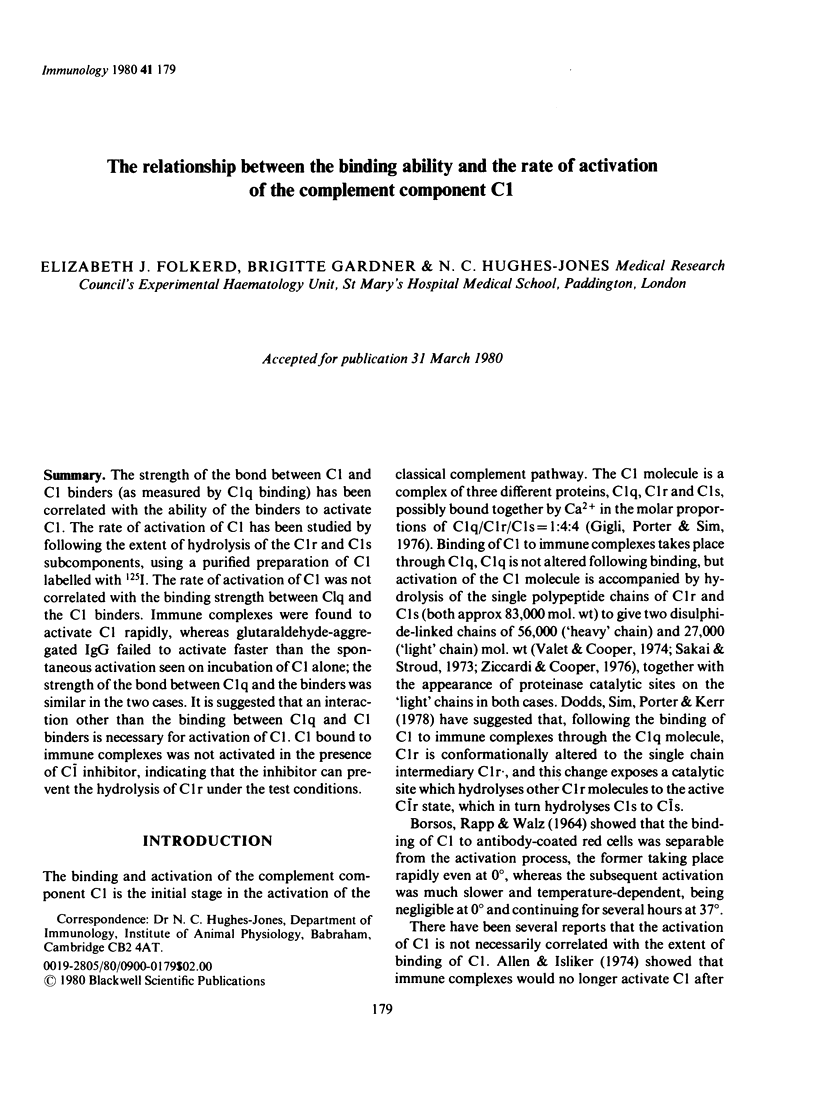
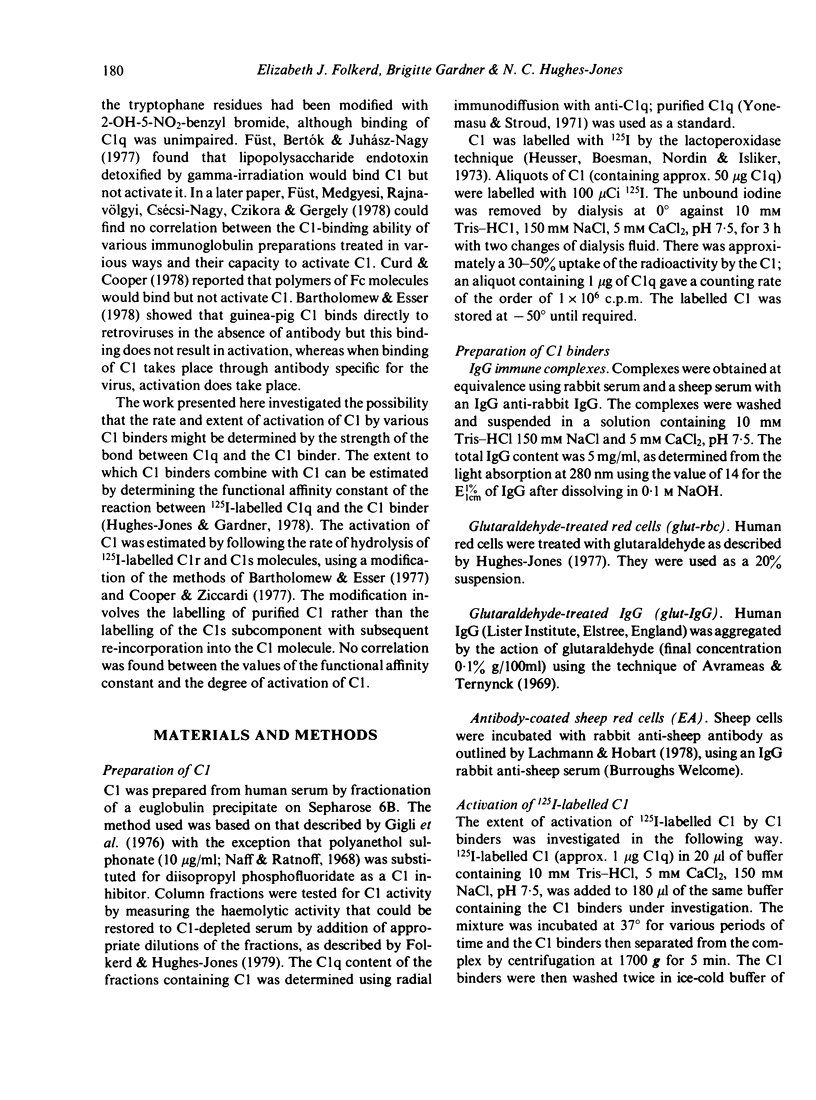
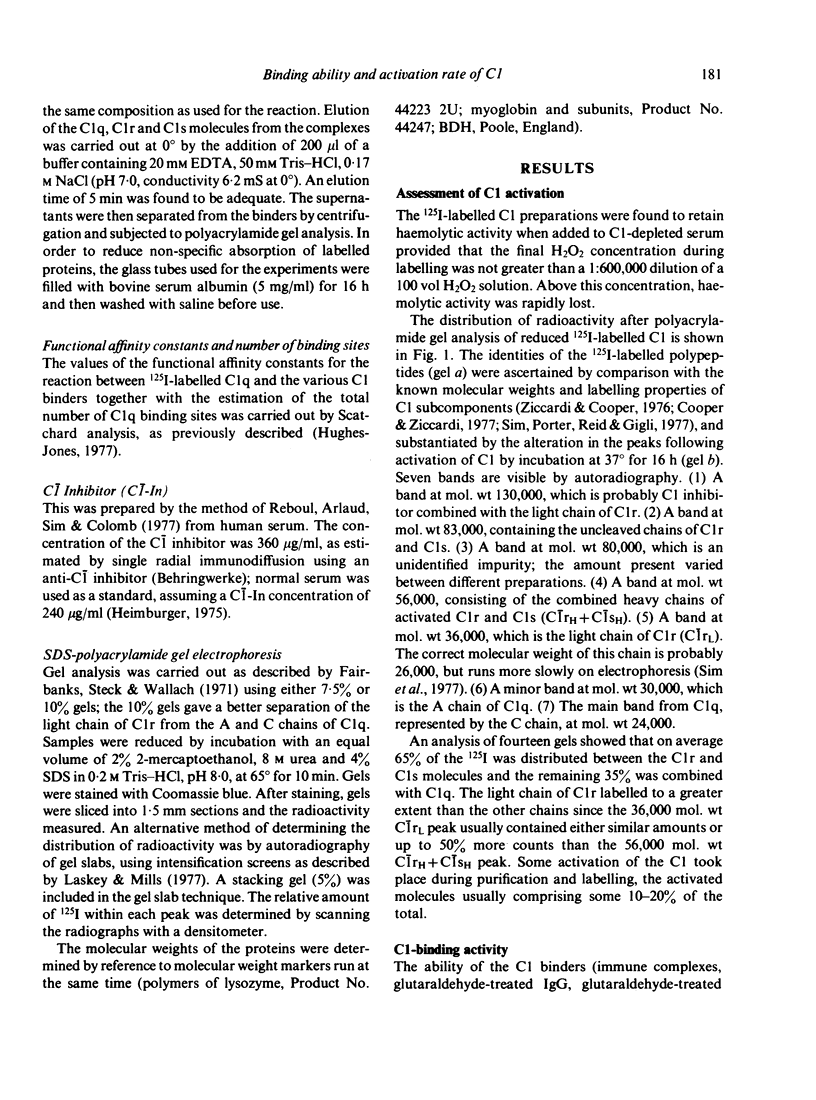
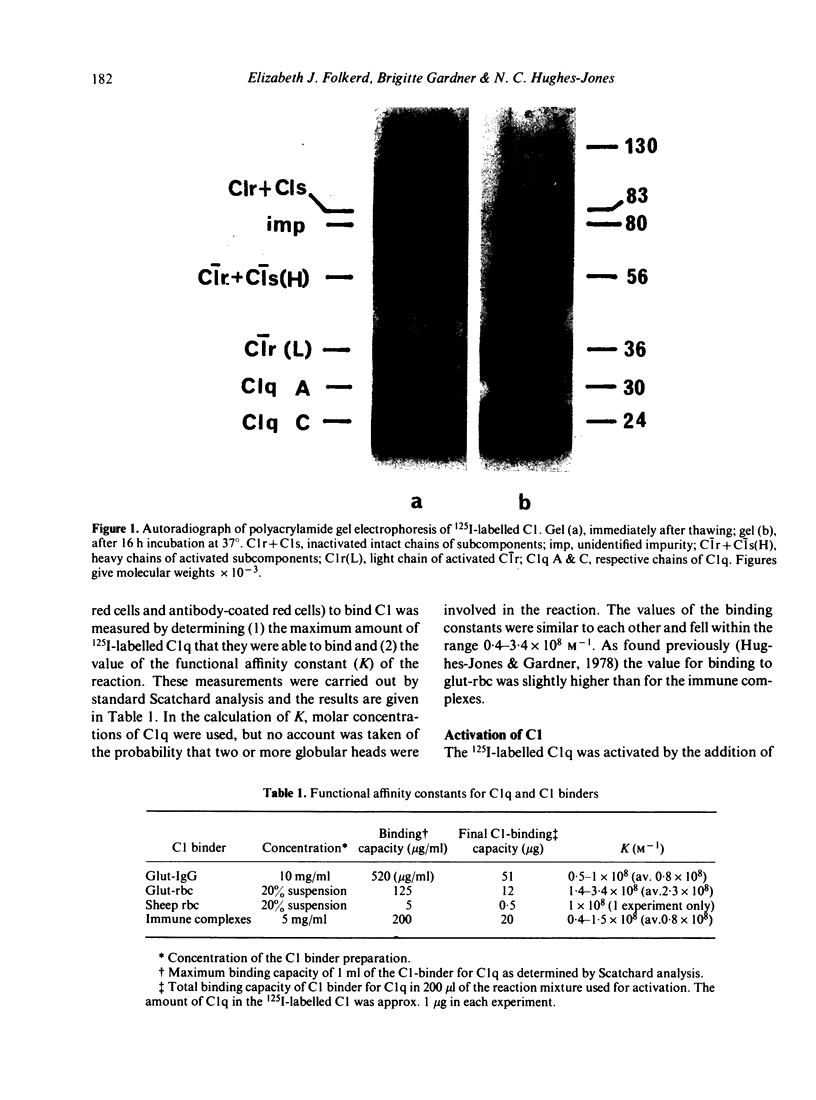

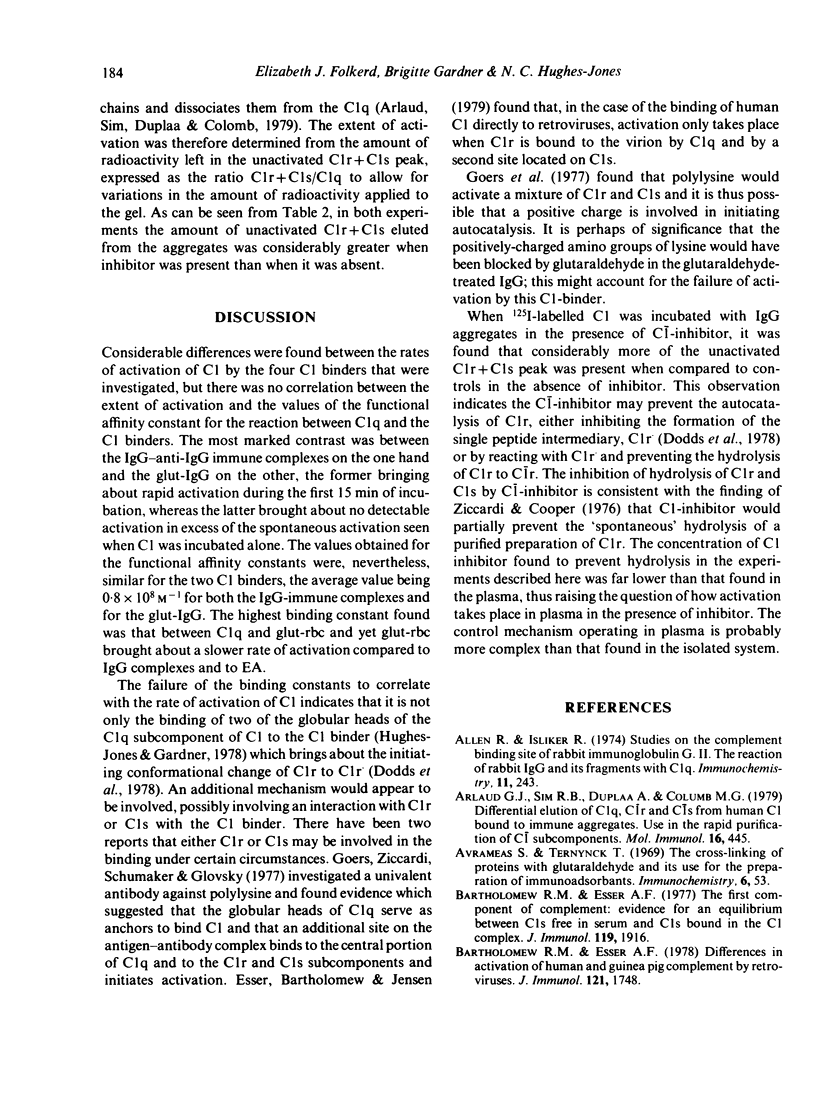
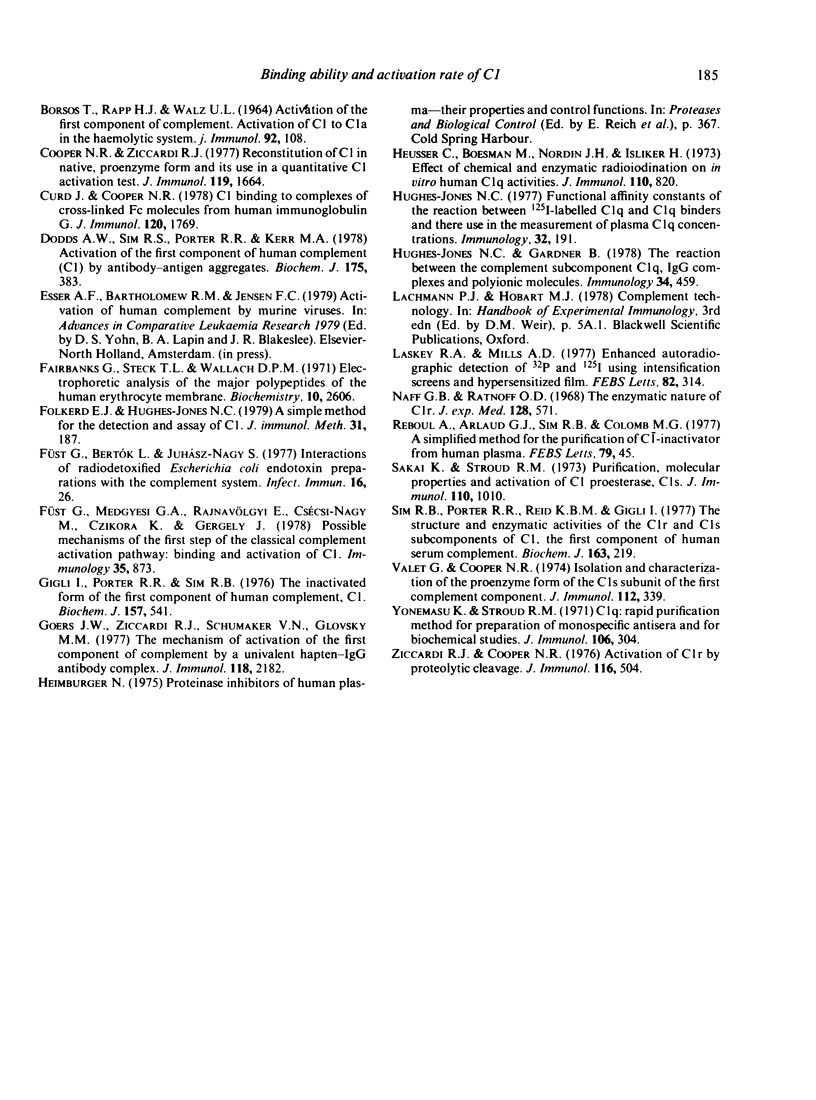
Images in this article
Selected References
These references are in PubMed. This may not be the complete list of references from this article.
- Allan R., Isliker H. Studies on the complement-binding site of rabbit immunoglobulin G-11. The reaction of rabbit IgG and its fragments with Clq. Immunochemistry. 1974 May;11(5):243–248. doi: 10.1016/0019-2791(74)90202-x. [DOI] [PubMed] [Google Scholar]
- Arlaud G. J., Sim R. B., Duplaa A. M., Colomb M. G. Differential elution of Clq, Clr and Cls from human Cl bound to immune aggregates. Use in the rapid purification of Cl subcomponents. Mol Immunol. 1979 Jul;16(7):445–450. doi: 10.1016/0161-5890(79)90069-5. [DOI] [PubMed] [Google Scholar]
- BORSOS T., RAPP H. J., WALZ U. L. ACTION OF THE FIRST COMPONENT OF COMPLEMENT. ACTIVITATION OF C'1 TO C'1A IN THE HEMOLYTIC SYSTEM. J Immunol. 1964 Jan;92:108–117. [PubMed] [Google Scholar]
- Bartholomew R. M., Esser A. F. Differences in activation of human and guinea pig complement by retroviruses. J Immunol. 1978 Nov;121(5):1748–1751. [PubMed] [Google Scholar]
- Bartholomew R. M., Esser A. F. The first complement component: evidence for an equilibrium between C1s free in serum and C1s bound in the C1 complex. J Immunol. 1977 Dec;119(6):1916–1922. [PubMed] [Google Scholar]
- Dodds A. W., Sim R. B., Porter R. R., Kerr M. A. Activation of the first component of human complement (C1) by antibody-antigen aggregates. Biochem J. 1978 Nov 1;175(2):383–390. doi: 10.1042/bj1750383. [DOI] [PMC free article] [PubMed] [Google Scholar]
- Fairbanks G., Steck T. L., Wallach D. F. Electrophoretic analysis of the major polypeptides of the human erythrocyte membrane. Biochemistry. 1971 Jun 22;10(13):2606–2617. doi: 10.1021/bi00789a030. [DOI] [PubMed] [Google Scholar]
- Folkerd E. J., Hughes-Jones N. C. A simple method for the detection and assay of C1. J Immunol Methods. 1979;31(1-2):187–189. doi: 10.1016/0022-1759(79)90300-4. [DOI] [PubMed] [Google Scholar]
- Füst G., Bertók L., Juhász-Nagy S. Interactions of radio-detoxified Escherichia coli endotoxin preparations with the complement system. Infect Immun. 1977 Apr;16(1):26–31. doi: 10.1128/iai.16.1.26-31.1977. [DOI] [PMC free article] [PubMed] [Google Scholar]
- Füst G., Medgyesi G. A., Rajnavölgyi E., Csécsi-Nagy M., Czikora K., Gergely J. Possible mechanisms of the first step of the classical complement activation pathway: binding and activation of C1. Immunology. 1978 Dec;35(6):873–884. [PMC free article] [PubMed] [Google Scholar]
- Gigli I., Porter R. R., Sim R. B. The unactivated form of the first component of human complement, C1. Biochem J. 1976 Sep 1;157(3):541–548. doi: 10.1042/bj1570541. [DOI] [PMC free article] [PubMed] [Google Scholar]
- Goers J. W., Ziccardi R. J., Schumaker V. N., Glovsky M. M. The mechanism of activation of the first component of complement by a univalent hapten-IgG antibody complex. J Immunol. 1977 Jun;118(6):2182–2191. [PubMed] [Google Scholar]
- Heusser C., Boesman M., Nordin J. H., Isliker H. Effect of chemical and enzymatic radioiodination on in vitro human Clq activities. J Immunol. 1973 Mar;110(3):820–828. [PubMed] [Google Scholar]
- Hughes-Jones N. C. Functional affinity constants of the reaction between 125I-labelled C1q and C1q binders and their use in the measurement of plasma C1q concentrations. Immunology. 1977 Feb;32(2):191–198. [PMC free article] [PubMed] [Google Scholar]
- Hughes-Jones N. C., Gardner B. The reaction between the complement subcomponent C1q, IgG complexes and polyionic molecules. Immunology. 1978 Mar;34(3):459–463. [PMC free article] [PubMed] [Google Scholar]
- Laskey R. A., Mills A. D. Enhanced autoradiographic detection of 32P and 125I using intensifying screens and hypersensitized film. FEBS Lett. 1977 Oct 15;82(2):314–316. doi: 10.1016/0014-5793(77)80609-1. [DOI] [PubMed] [Google Scholar]
- Naff G. B., Ratnoff O. S. The enzymatic nature of C'1r. Conversion of C'1s to C'1 esterase and digestion of amino acid esters by C'1r. J Exp Med. 1968 Oct 1;128(4):571–593. doi: 10.1084/jem.128.4.571. [DOI] [PMC free article] [PubMed] [Google Scholar]
- Sim R. B., Porter R. R., Reid K. B., Gigli I. The structure and enzymic activities of the C1r and C1s subcomponents of C1, the first component of human serum complement. Biochem J. 1977 May 1;163(2):219–227. doi: 10.1042/bj1630219. [DOI] [PMC free article] [PubMed] [Google Scholar]
- Valet G., Cooper N. R. Isolation and characterization of the proenzyme form of the C1s subunit of the first complement component. J Immunol. 1974 Jan;112(1):339–350. [PubMed] [Google Scholar]
- Ziccardi R. J., Cooper N. R. Activation of C1r by proteolytic cleavage. J Immunol. 1976 Feb;116(2):504–509. [PubMed] [Google Scholar]



